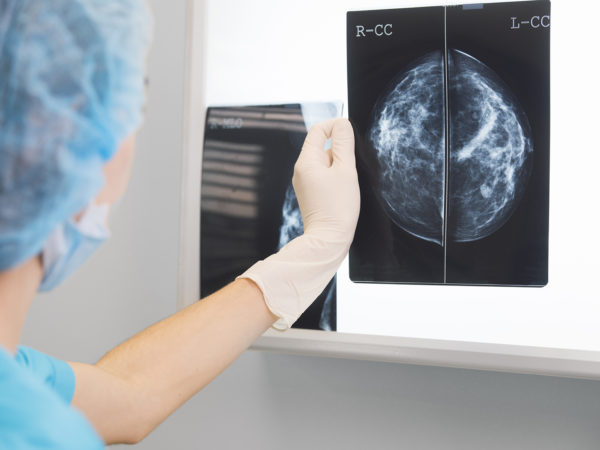Better Breast Cancer Surgery?
I’m wondering about a new kind of breast cancer surgery that spares the skin and the nipple. Is this as safe as earlier methods?
Andrew Weil, M.D. | June 3, 2019

You’re referring to nipple-sparing mastectomy, a less invasive operation that gives a woman a more natural appearing breast since her own skin covers the interior reconstruction of the affected organ. According to researchers at the Mayo Clinic, the procedure leaves the surface of the breast intact and is considered safe for many patients, including those whose cancer has spread to nearby lymph nodes or who are at risk for surgical complications. It involves removing breast tissue but sparing the skin, nipple and areola and immediately rebuilding the breast. The breast implant is placed in front of the chest muscle rather than behind it as in earlier methods of breast reconstruction.
In a presentation at the annual meeting of the American Society of Breast Surgeons, Mayo Clinic researchers reported on outcomes of this procedure in 769 women who were operated on between 2009 and 2017. They found that complications within 30 days after surgery dropped from 14.8 percent in 2009 to 6.3 percent in 2017, even though the surgical procedure was performed on more women, including some whose cancer was locally advanced and some who had additional risk factors for surgical complications, such as obesity or prior surgery. One year after surgery, breast reconstruction was considered a success in roughly 97 percent of cases. However, recent or current smoking or radiation before surgery significantly increased the rate of complications, and radiation before or after surgery was linked to more cases of breast reconstruction failure.
Senior study author Tina Hieken, a Mayo Clinic breast surgeon, says breast cancer patients who aren’t offered nipple-sparing procedures should ask their surgeons why. “As this study shows, these surgeries are proving safe for a broad patient base,” she maintains. Beyond that, Mayo researchers say that nipple-sparing mastectomies result in less pain during recovery than earlier procedures.
Women considered best suited for this surgery are young, healthy nonsmokers with small to medium-sized breasts and no or minimal drooping of the affected breast due to weakened ligaments that support it. Women who are active smokers or those who aren’t able to have immediate breast reconstruction aren’t considered candidates for the surgery, according to the researchers. Women who are obese, have had extensive radiation or prior breast surgery, and those that have extremely large breasts or medical conditions that can increase the chances of complications also may not be suited for the procedure.
Earlier research showed that the nipple-sparing surgery proved a “powerful means of risk reduction” for women with inherited mutations of the BRCA1 or BRCA2 genes considered responsible for between five and 10 percent of all cases of breast cancer. In a review of 346 patients from 9 institutions who underwent these operations, no breast cancers had developed after a follow-up of 34 and 56 months respectively. The researchers wrote that the surgery should be offered to appropriate women who carry the genetic mutations.
Andrew Weil, M.D.
Source:
James W. Jakup et al, “Oncologic Safety of Prophylactic Nipple-Sparing Mastectomy in a Population with BRCA Mutations A Multi-Institutional Study,” JAMA Surgery, February 2018













